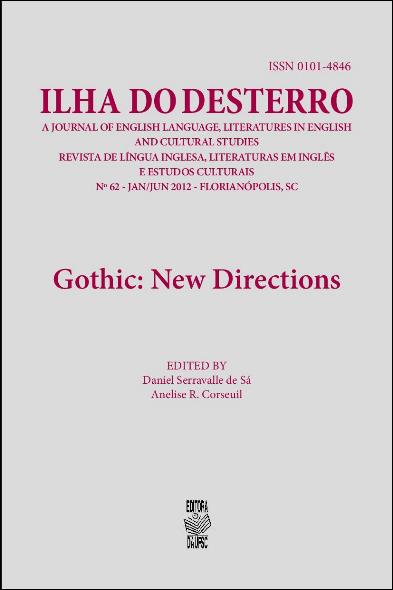How the gothic reared its head in Dutch literature
DOI:
https://doi.org/10.5007/2175-8026.2012n62p127Resumo
It was not until the twentieth century, and especially the 1980s, that Dutch Gothic fiction began to flourish. This article gives an overview of the history of the Gothic in Dutch literature, and discusses the explanations given for the absence of a Dutch Gothic tradition. It then examines six Gothic novels from the 1980s in more depth to determine what kind of “cultural work” the Gothic does in late-twentieth century Dutch novels. In those novels, the Gothic is a way of expressing the ambivalences accompanying new societal relations following the 1960s, when constructs of the self in terms of gender and sexuality were reformulated.
Downloads
Publicado
Edição
Seção
Licença
A revista Ilha do Desterro publica artigos e resenhas inéditos, referentes as áreas de Inglês, Literaturas em Língua Inglesa e Estudos Culturais. Publica volumes mistos e/ou temáticos, com artigos e resenhas em inglês e português.
Autores mantém os direitos autorais e concedem à revista o direito de primeira publicação, com o trabalho simultaneamente licenciado sob a Licença Creative Commons Attribution que permite o compartilhamento do trabalho com reconhecimento da autoria e publicação inicial nesta revista.

This work is licensed under a Creative Commons Attribution 4.0 International License.



